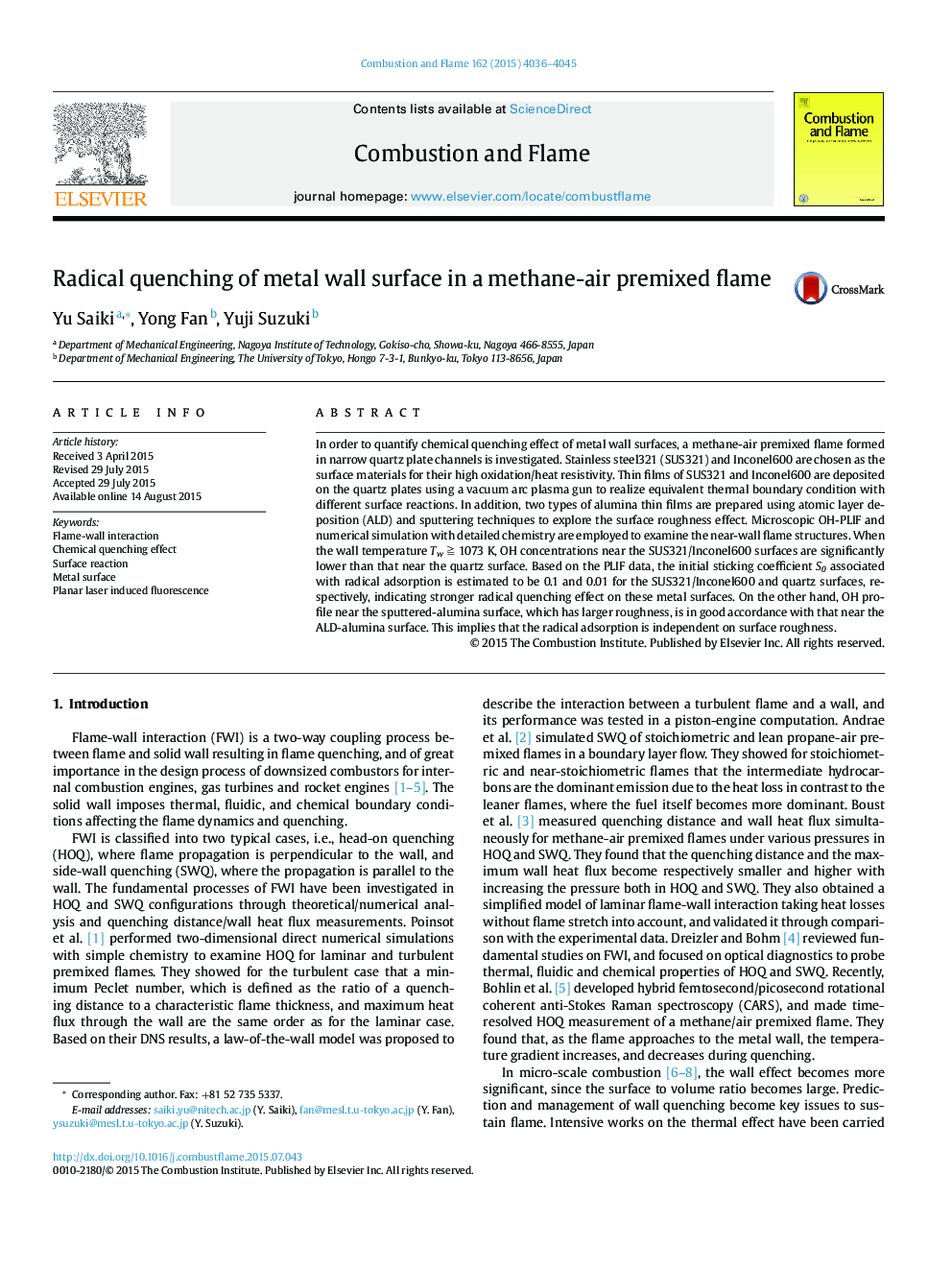| Article ID | Journal | Published Year | Pages | File Type |
|---|---|---|---|---|
| 10264793 | Combustion and Flame | 2015 | 10 Pages |
Abstract
In order to quantify chemical quenching effect of metal wall surfaces, a methane-air premixed flame formed in narrow quartz plate channels is investigated. Stainless steel321 (SUS321) and Inconel600 are chosen as the surface materials for their high oxidation/heat resistivity. Thin films of SUS321 and Inconel600 are deposited on the quartz plates using a vacuum arc plasma gun to realize equivalent thermal boundary condition with different surface reactions. In addition, two types of alumina thin films are prepared using atomic layer deposition (ALD) and sputtering techniques to explore the surface roughness effect. Microscopic OH-PLIF and numerical simulation with detailed chemistry are employed to examine the near-wall flame structures. When the wall temperature Tw â§Â 1073 K, OH concentrations near the SUS321/Inconel600 surfaces are significantly lower than that near the quartz surface. Based on the PLIF data, the initial sticking coefficient S0 associated with radical adsorption is estimated to be 0.1 and 0.01 for the SUS321/Inconel600 and quartz surfaces, respectively, indicating stronger radical quenching effect on these metal surfaces. On the other hand, OH profile near the sputtered-alumina surface, which has larger roughness, is in good accordance with that near the ALD-alumina surface. This implies that the radical adsorption is independent on surface roughness.
Related Topics
Physical Sciences and Engineering
Chemical Engineering
Chemical Engineering (General)
Authors
Yu Saiki, Yong Fan, Yuji Suzuki,
